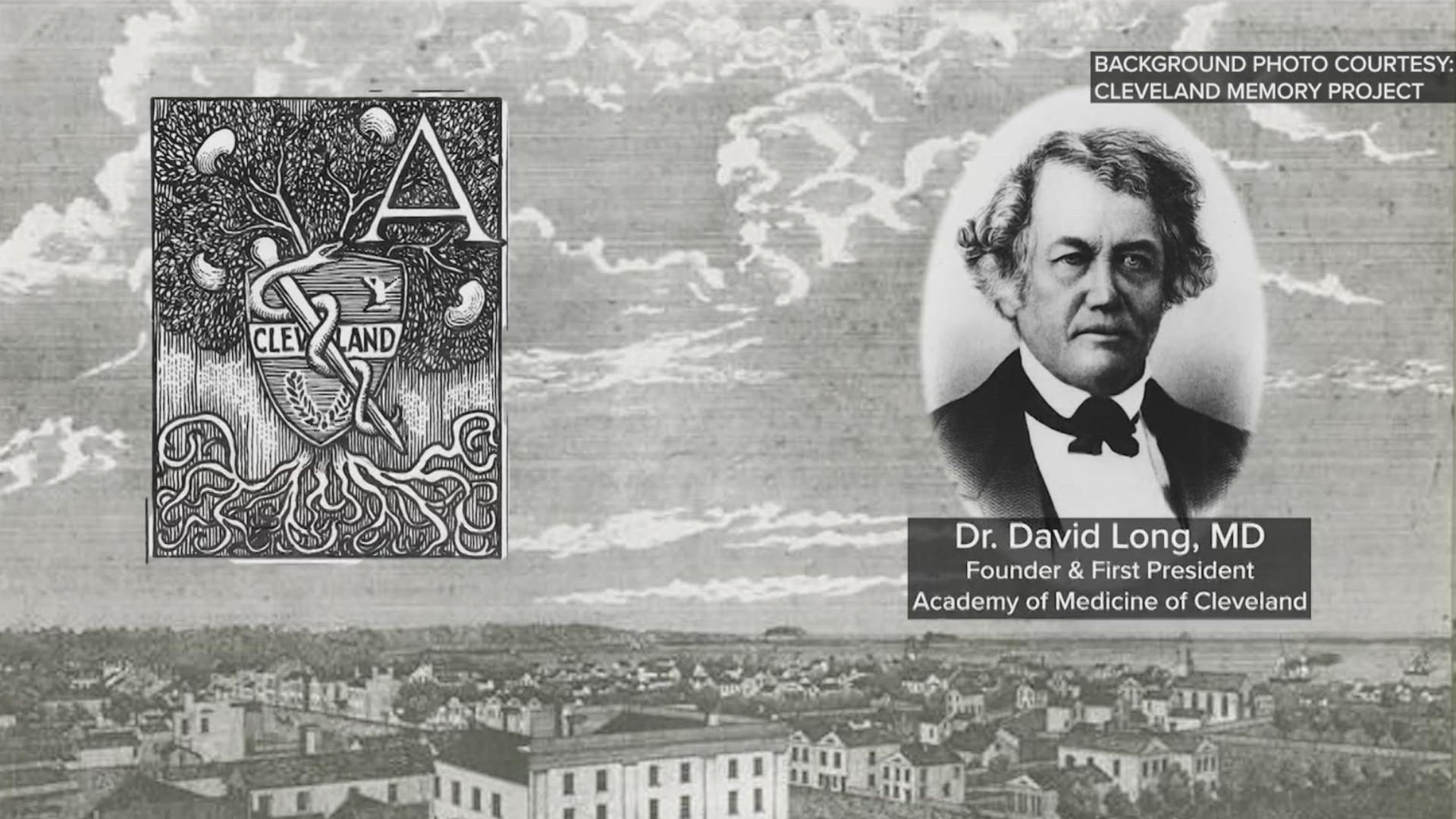CLEVELAND — The Academy of Medicine of Cleveland & Northern Ohio began as the 19th Medical District of Ohio in 1824, the first professional medical association in the state and one of the oldest medical organizations in the country. Just five physicians attended the first meeting, not surprising since Cleveland didn't even have a hospital.
But it didn't take long: A cholera epidemic erupted in 1837, giving birth to the city's first infirmary. Formed by 28 doctors who worked without pay. today you know it as MetroHealth.
In 1866, civic leaders (not doctors) decided to form a second hospital to help the less fortunate. Wilson Street Hospital opened in 1868, and today, you know it as University Hospitals.
In 1921, four doctors who were war veterans founded Cleveland Clinic and treated 42 patients on their opening day. The group of hospitals grew and changed as quickly as health care, and while they became the region's leading employers in later years, the contributions of their doctors saved millions of lives suffering from thousands of problems.
Cleveland's impact on polio helped to eradicate the disease. Dr. John Toomey identified how it invaded the body through the gastrointestional system, and Dr. Frederick Robbins won the Nobel Prize for growing the virus in a test tube, which paved the way for Dr. Jonas Salk to invent the polio vaccine.
In 1961, Dr. Albert Sabin of Cincinnati developed an oral version of the vaccine that lasted longer with stronger immunity. The Academy of Medicine organized a mass vaccination program (known as "Sabin Oral Sundays") and vaccinated 900,000 Cuyahoga County residents, at the time considered the best record in the United States.
Area doctors also led the way in discovery and treatments for rheumatic fever, tuberculosis, and limb transplantation, that eventually lead to the first face transplant. They developed mechanical limbs which were the precursor to bionics.
Additionally, our doctors revolutionized heart care. In 1933 Dr. Claude Beck successfully removed the first heart tumor, and two years later did the first coronary artery disease operation. He was the first to do heart defibrillation, and helped develop what we now know as CPR.
The Kay Cross oxygenator kept patients alive for open heart surgery, and thanks to industrial Cleveland was mass produced for surgeons around the world. In 1958, Cleveland Clinic doctors discovered coronary angiography and got their first look inside arteries. Nine years later, they did the first bypass surgery, and today the hospital has remained the No. 1 center for heart care in the U.S. for nearly 30 years.
Our medical systems were also forerunners of desegregating hospital care, along with including women. The lists of firsts and innovations easily fill the last 200, and today, we're doing even more. The Academy is ready to guide the next generation of physicians who will change the medical landscape once more.

